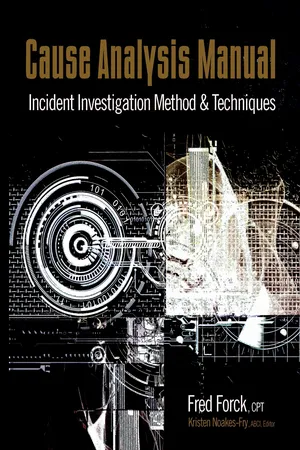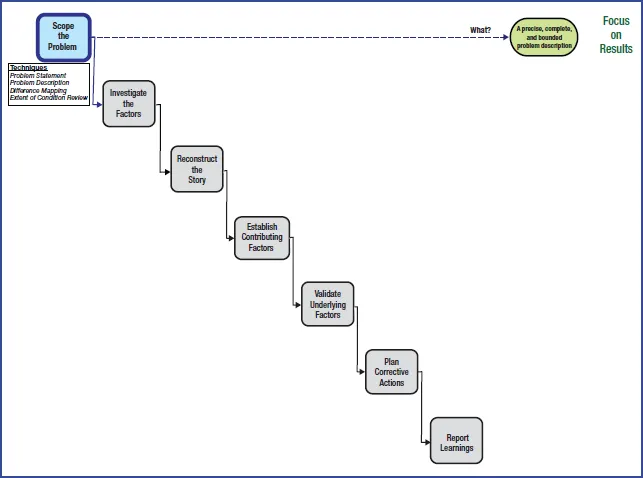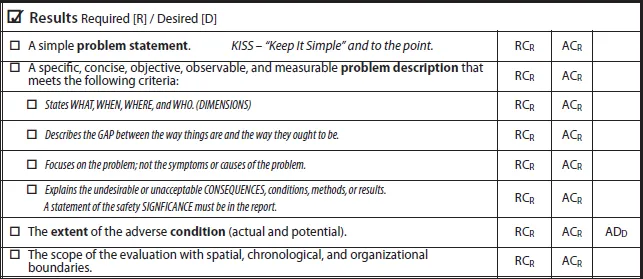
Cause Analysis Manual
Incident Investigation Method & Techniques
- 342 pages
- English
- ePUB (mobile friendly)
- Available on iOS & Android
About This Book
A failure or accident brings your business to a sudden halt. How did it happen? What's at the root of the problem? What keeps it from happening again? Good detective work is needed -- but how do you go about it? In this new book, industry pioneer Fred Forck's seven-step cause analysis methodology guides you to the root of the incident, enabling you to act effectively to avoid loss of time, money, productivity, and quality.
From 30+ years of experience as a performance improvement consultant, self-assessment team leader, and trainer, Fred Forck, CPT, understands what you need to get the job done. He leads you through a clear step-by-step process of root cause evaluation, quality improvement, and corrective action. Using these straightforward tools, you can avoid errors, increase reliability, enhance performance, and improve bottom-line results -- while creating a resilient culture that avoids repeat failures. The key phases of this successful cause analysis include:
- Scoping the Problem
- Investigating the Factors
- Reconstructing the Story
- Establishing Contributing Factors
- Validating Underlying Factors
- Planning Corrective Actions
- Reporting Learnings
At each stage, Cause Analysis Manual: Incident Investigation Method and Techniques gives you a wealth of real-world examples, models, thought-provoking discussion questions, and ready-to-use checklists and forms.
The author provides:
- references for further reading
- hundreds of illustrative figures, tables, and diagrams
- a full glossary of terms and acronyms
- professional index
You know that identifying causes and preventing business-disrupting events isn't always easy. By following Fred Forck's proven steps you will be able to identify contributing factors, align organizational behaviors, take corrective action, and improve business performance!
Are you a professor or leader of seminars or workshops? On confirmed course adoption of Cause Analysis Manual: Incident Investigation Method and Techniques, you will have access to a comprehensive, professional Instructor's Manual.
Frequently asked questions
Information

Step 1
Scope the Problem
Basics of Cause Analysis for Step 1



1.1 Problem Statement
What is it?
Why is it useful?
Table of contents
- Cover
- Title
- Copyright
- Table of Contents
- Acknowledgments
- Preface
- Foreword by Ben Whitmer
- Foreword by John D. Schnack
- Foreword by Mark Reidmeyer
- Introduction: Getting Started with Cause Analysis
- Step 1: Scope the Problem
- Step 2: Investigate the Factors
- Step 3: Reconstruct the Story
- Step 4: Establish Contributing Factors
- Step 5: Validate Underlying Factors
- Step 6: Plan Corrective Actions
- Step 7: Report Learnings
- Appendix A: Creating Working Definitions
- Appendix B: Common Factor Analysis
- Glossary
- Index
- Credits
- About the Author